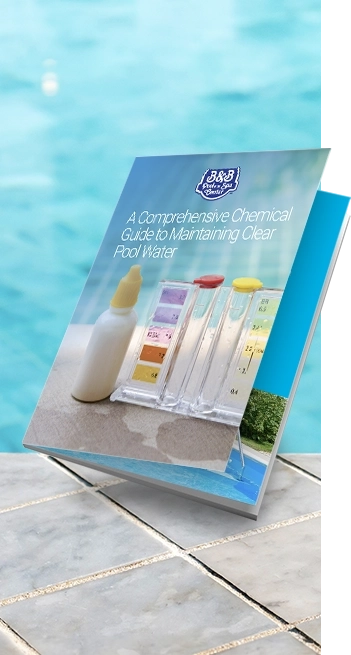How to Make Disinfectant from Pool Chlorine
Pool Education, Sanitation
If you’re struggling to find enough disinfectant, you’re not alone. With the entire country taking extra care to clean their homes and vehicles, bleach can be a struggle to find. So what do you do to stay safe when you don’t have bleach? Don’t fret. We’ve got a recipe for disinfectant effective against the COVID-19 virus that you can make at home.
Bleach 101
First, let’s start with some basics. Bleach’s active chemical, sodium hypochlorite, is a greenish-yellow salt that is solid in its natural state. However, you have to make the salt stable and dilute it to a safe concentration. This is why sodium hypochlorite is mixed with water at different strengths depending on its intended use. Most household bleach has a concentration of 3-8% sodium hypochlorite and 0.01–0.05% sodium hydroxide that keeps the bleach from breaking down.
So how does bleach work as a disinfectant? In order to kill viruses, the chemical breaks down the protein structures within viruses. While it is effective, scientists are still investingating its exact mechanisms. When bleach comes in contact with bacteria, it breaks down the cell membrane. This is the structure that protects the organ-like structures within the bacteria that keep it alive. It takes a shorter amount of time to kill bacteria than viruses, with full disinfection from viruses taking up to 15 minutes. Bleach also kills parasites in a similar way to bacteria, damaging their cells so they can no longer perform their jobs, killing the parasites.
Photo by Andrea Piacquadio from Pexels
What to use when you can’t find bleach
Given the need to disinfect our homes and cars more than ever, going without disinfectants is not a current option. There are other disinfectants like isopropyl alcohol, but even that is in short supply. So what do you use when you can’t find bleach?
Another form of sodium hypochlorite, in a slightly higher concentration, is the chemical used to shock pools. Instead of the strength used to make laundry bleach, pool chlorine usually has a 10% to 12.5% concentration. That means that if diluted properly, pool chlorine can be used just as safely as household bleach.
Just like household bleach is used to disinfect our homes, pool chlorine kills bacteria, viruses, and parasites that can survive within water. Another bonus of using this in public and private swimming pools is that it remains within the water, lasting more than the necessary time to effectively kill viruses and parasites.
How to use pool chlorine as bleach to disinfect
Now that we know pool chlorine and household bleach have the same active ingredient, all you have to do is know the proper ratio to dilute it into a safe concentration. Thankfully, this doesn’t require a degree in chemistry or anything other than water, pool chlorine, and a spray bottle.
In order to use pool chlorine as bleach, you can use the following ratios:
- 2.5 tablespoons (1/6 cup) pool chlorine per gallon of water
- 2 teaspoons of pool chlorine per quart of water.
You can then use the liquid in a spray bottle for quick disinfection, or grab a bucket and a sponge for greater coverage. Please make sure not to mix bleach with any other chemicals, especially ammonia, as this can create harmful gasses that are dangerous to both humans and pets.
Keeping you and your family safe is as important as ever. If you need resources for your family to avoid catching and spreading the virus, the World Health Organization has information on proper hand washing and disinfecting practices here. You can find local resources to keep your family fed at Feeding America’s website and help paying for medical bills from these programs at USA.gov.


